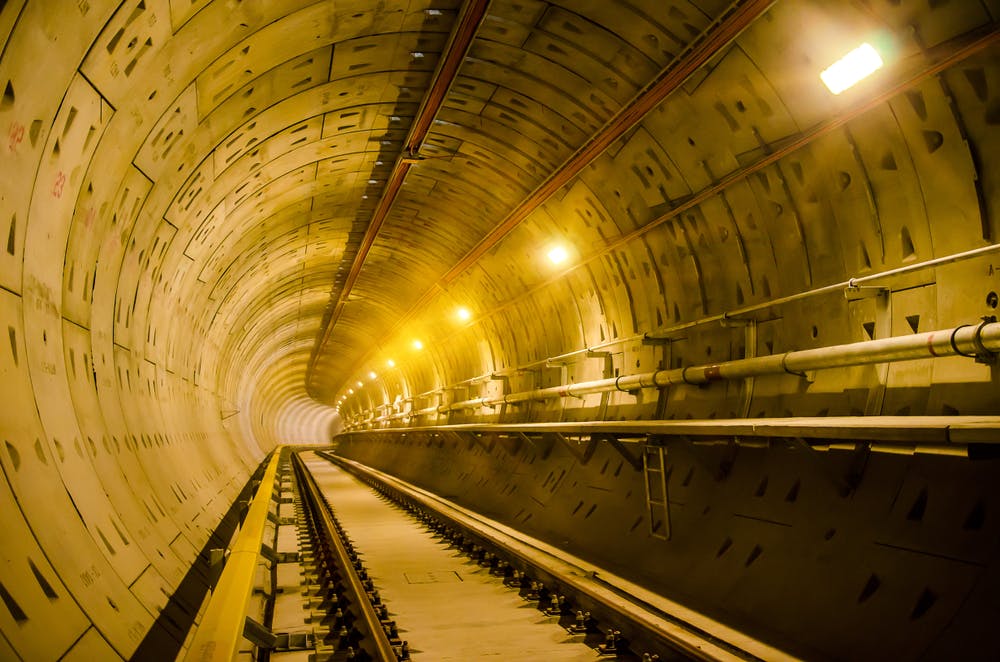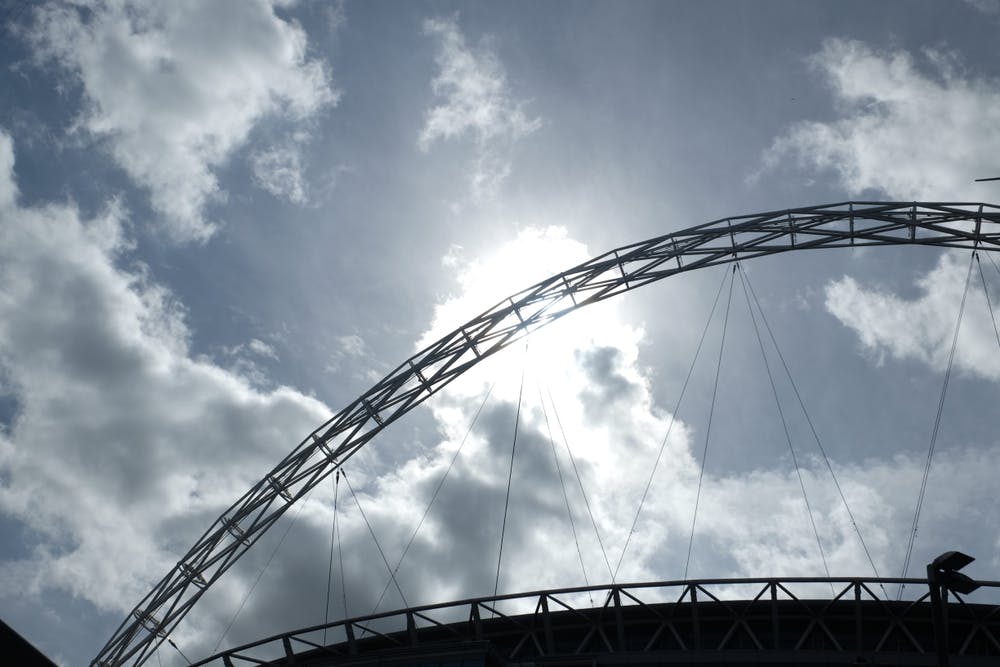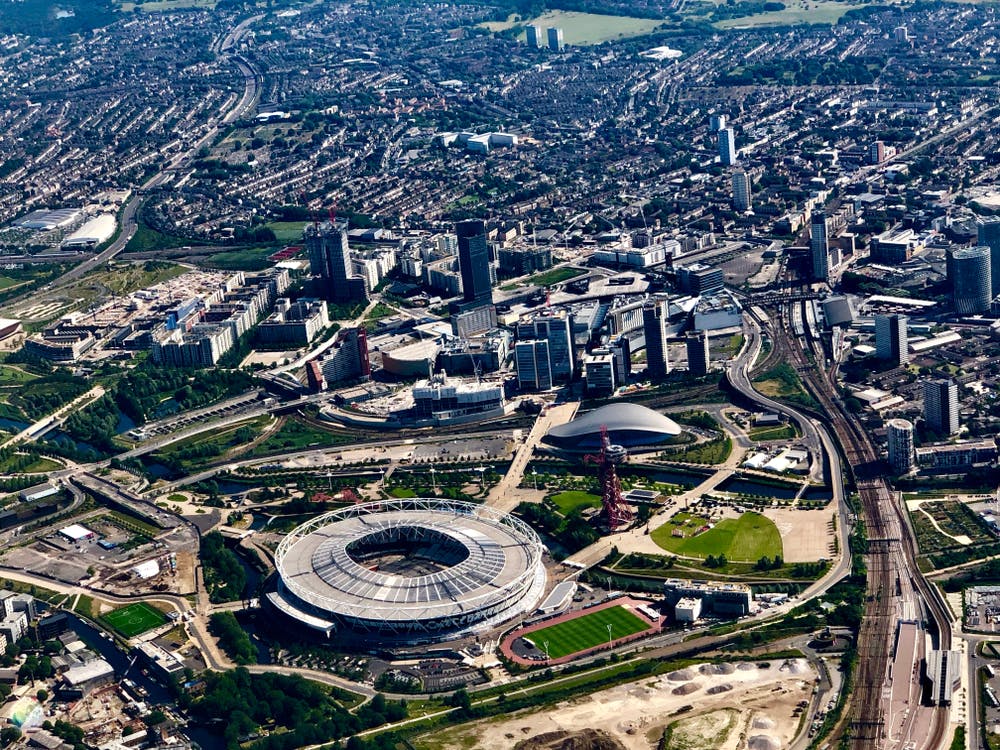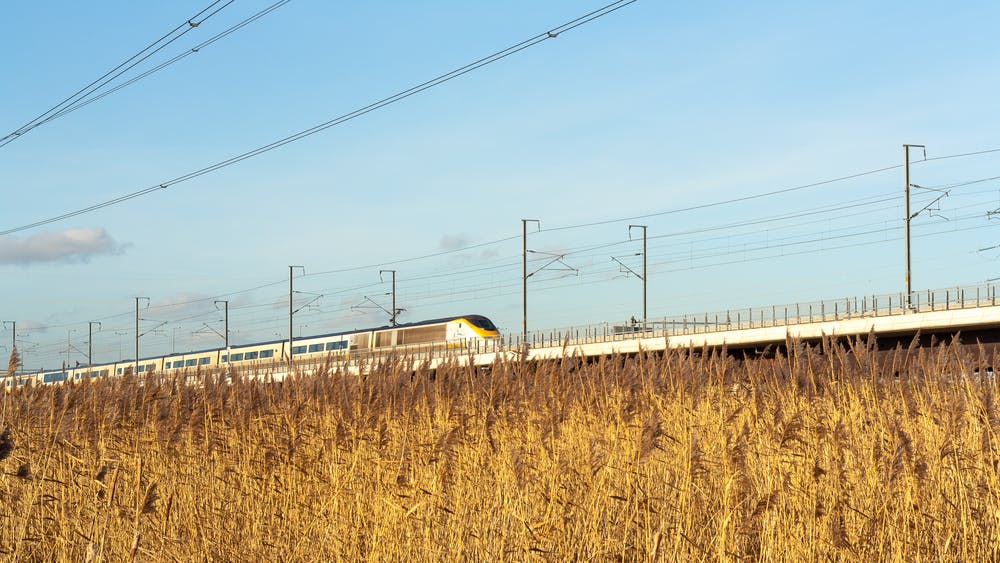10th January 2022
Megaprojects: UK’s Most Costly Projects, what are they?
Megaprojects provide many of the world’s important infrastructure in areas such as transport, leisure, sport and housing. However, with important projects comes a pretty hefty price tag, so we’ve researched what defines a megaproject and which structures put the biggest dent in the country’s budget.
IronmongeryDirect
10th January 2022
5 mins
What is a Megaproject?
According to several sources, including the Federal Highway Administration within the US Department of Transportation¹, and the Altschuler & Luberoff book Mega-Projects: The Changing Politics of Urban Public Investment², the definition of a Megaproject is as follows:
· “Major infrastructure projects that cost more than $1 billion, or projects of a significant cost that attract a high level of public attention or political interest because of substantial direct and indirect impacts on the community, environment, and State budgets. "Mega" also connotes the skill level and attention required to manage the project successfully.”
· “Initiatives that are physical, very expensive, and public"
The UK has invested in several megaprojects over the years to provide improved infrastructure to its population, but just how much has the country spent on some of the biggest and most significant of these projects? We take a look at 5 of the most expensive UK megaprojects that have either been completed or are currently under construction.
Note: Some figures have been adjusted for inflation, these figures with be marked with an * symbol
The UK’s Most Costly Megaprojects
1. Channel Tunnel - £17.2bn*
A project that ran between 1988 and 1994, The Channel Tunnel is the only fixed transport link between the UK and the mainland of Europe. The tunnel starts in Folkestone, ending in Coquelles near Calais in Northern France. The tunnel runs beneath The English Channel, giving the tunnel its name.
Even though the tunnel has been operational for nearly 28 years, during construction the project suffered from the very common issue of cost overruns, something that Bent Flyvbjerg claimed is extremely common.
According to Flyvbjerg in his article What You Should Know About Megaprojects and Why³: “Nine out of ten such projects have cost overruns. Overruns of up to 50 percent in real terms are common, over 50 percent not uncommon”. The latter ended up being the case for the Channel Tunnel.
A total of 15,000 people were employed to work on the project, with their daily expenditure running at just under £9.3 million*. Along with costly equipment such as the boring machine used to create the underwater tunnel and what Flyvberg referred to as “enhanced safety, security and environmental demands”⁴, the cost of the project ran over by a staggering 80%.

The consequences of this being that anyone using the tunnel is subsidized by private investors, which lead to an ex post economic evaluation of the project stating that: “overall the British economy would have been better off had the tunnel never been constructed”⁵.
This project proves that even if a structure succeeds practically, in this case providing an alternative way for the British and European populations to travel, that does not mean it will succeed financially in the short or long term.
2. Wembley Stadium Reconstruction - £1.12bn
The task of demolishing the original 1923 version of Wembley Stadium and completely reconstructing it was never going to be an easy one, and it wasn’t easy on the investor’s pockets either.
With several delays and issues, the project started with an initial budget of £326.5 million provided by Australian construction company Multiplex. However, the project ended up costing over £1 billion, making it one of the most expensive stadiums ever constructed.
The perceived lack of funds proposed in the initial budget by the FA led to the project being delayed almost immediately, but this problem was solved a year later when the FA secured additional funding.
After this financial win, the project could commence in 2003, with the hope of no further issues and a proposed completion target of 2006. But this was not meant to be for Wembley Stadium, further problems and delays continued to plague to project, some of which were even predicted.
The project seemed to suffer the most when it came to the subcontractors on the job. The first of these being the Cleveland Bridge & Engineering Company, brought on to the project to construct the iconic arch that extends from one side of the stadium to the other. The company warned the FA of the rising cost of the arch, but Multiplex disagreed with their concerns, which lead to the company walking away from the project in August 2004.
This decision resulted in Multiplex and Cleveland battling it out in legal proceedings, and even though the court ruled in favour of Multiplex, they were not able to recoup their losses. This meant further time delays with no financial benefit. Eventually Multiplex hired a new contractor and they had to start the construction of the arch all over again.
The subcontractor problems continued for the project as another subcontractor was fined £150,000 for violating health and safety laws after an accident involving scaffolding cause an injury to one worker and the fatality of another.
This and several other delays, including expensive and extensive repair works after alleged cut corners by Multiplex themselves in an attempt to speed up the project, resulted in the stadium not being completed until March 2007.
Although it took 8 years to get there, Wembley Stadium broke even in 2015, and just two years later, the stadium made pre-tax profits of £5.5 million. So even though the project faced many issues, the stadium proved its worth and create an infrastructure that provided great benefit to the sporting world in the UK.

3. London Olympics Stadium – Approx £486.9m
After learning about the problems faced by the first two projects mentioned, it wouldn’t be unreasonable to think that the stadium constructed for the 2012 Summer Olympics would have just as many issues when it comes to construction and budget. But this particular megaproject surprised many, not only being finished earlier than planned and under budget, but extra steps were made to create not only a stadium that would result in a successful Olympic Games, but a sustainable addition to London’s cityscape.
The project got off to a great start with sports specialising architectural company Populous and contractor Sir Robert McAlpine breaking ground on the project three months early in May 2008. This gave the construction team an important head start, which results in the stadium being completed in March 2011, 16 months before the start of the Olympic Games.
The design and approach taken in terms of construction was planned extensively and ahead of time, resulting in the crews being able to carry out a seamless project from start to finish. Better still, sustainable practices were used throughout the project, including using clay already available at the site to construct the track-and-field arena, as well as using concrete that has 40% lower carbon dioxide content than standard concrete. These practices contributed to the total bill costing £10 million less than initially planned for.
Although from a practical perspective the project went extremely well, the public’s opinion of the meticulously planned out design was mixed. Statements made by critics and the media ranged from “magnificent” to “underwhelming” and some even questioned if it was suitable for the same iconic status as other megaprojects similar to it. Despite this, the stadium was nominated for the Stirling Prize for Architecture in 2012.
Once the Olympic Games was over, it wouldn’t take long for work to commence on repurposing the stadium. The stadium was designed to be dismountable, given the temporary nature of the event it was used for, which in theory would make it easier to revamp the stadium for a more permanent and long-term purpose. However, unlike the first round of construction, a slight issue occurred this time around.
Balfour Beatty, the same construction company that carried out the work on the initial stadium, realised they needed more funds to stabilise structures and to build a new roof, which resulted in an increase of funds by an additional £35.9 million.
With construction complete and the stadium redesigned, the stadium reopened as West Ham United FC’s home ground, with the club paying a reported annual rent of £2.5 million. It was reported in 2016 that the stadium is: “facing operational losses running into millions of pounds for years to come due to problems finding a naming-rights partner and hugely increased costs for retractable seating”⁶ and the COVID-19 pandemic has only incurred further losses.
The story of the London Olympic Stadium had its ups and downs, and even though the current stadium may be suffering financially, the initial run of the stadium proved to be a success, and even with the financial concerns, it seems that while critics may still not be impressed, football fans around the country and even the world seem to be.

4. HS2/3 - £115bn
The first on our list of megaprojects that is not completed, the High Speed 2 and High Speed 3 railways, also known as HS2 and HS3, is part of an entire high-speed rail network connecting London and Scotland. The plan for HS2 is scheduled to be rolled out in three phases, first connecting London to Birmingham, then Birmingham to Manchester, which will then lead connect to pre-existing Scottish national railway services. HS3 on the other hand, refers to an extensive upgrading plan to existing railways in the North of England.
The concept of high-speed railways in the UK began in 2003, with the opening of the rail link between London and The Channel Tunnel, otherwise known as HS1. After witnessing the benefits that high-speed rail offers, a second line was proposed in 2009 in a Y shaped route to incorporate Leeds and Manchester in Phase 2 of the project. The main goal of HS2 is to increase the capacity of the country’s rail network, designed to allow express services to be replaced with HS2 trains to allow local lines to run more frequently.
A switch of government leadership in 2010 meant that the initial plan was altered slightly to reduce disruption and environmental impact of construction, with the go-ahead being announced in January 2012. 7 years later in 2019, before the project even broke ground, an independent review of HS2 was ordered the Department for Transport. After a series of recommendations were made in the review, including reducing costs, this concluded with the announcement of a go-ahead once again in February 2020, but this time stating that the project will taken on with the “the right reforms in place” according to a government statement.
Construction approval was finally given in April 2020, with construction commencing in September of the same year.
Although the environmental impact of the HS2 construction had been a concern since the early stages, it seems that some were still not satisfied with the plan, which threatened to put a halt on the entire project. Several protest camps have been set up in opposition to the project, from protecting wildlife to concerns over London’s water supply. The issue of protestors became even more prevalent when the COVID-19 pandemic hit, with protestors speaking out with the opinion that the money for HS2 would be better used supporting the NHS during the pandemic. Some protestors even went as far as to dig underground tunnels to make their point, and extreme measures like this cost the HS2 project a massive £75 million.
This extra spend could be part of the reason why the northern section of HS2 has had its £34 billion budget cut in half. The revised plan with the new budget involves some remnants of the HS2 plan for the North, this still includes a high-speed line, but not as expansive and accommodating as originally planned. It is said that this plan will provide more time and resources to execute improvements to existing networks in the north of the country, an essential part of the HS3 project. The UK’s Transport Secretary, Grant Shapps, praised the plan, stating that the North would reap the benefits of this new strategy “up to 10 years sooner than previously planned”.⁷
With several setbacks and U-turns involved in this project, it is no surprise that the completion date of HS2 has been pushed back, with the London-Birmingham phase now due to open between 2029 and 2033, and any additional phases, whatever they may be, being extended to 2035-2040.
The HS2 project is a constantly evolving project, and at this point it seems that even those running the project do not know what the end result will be, and with the project already being over budget, there may be more trouble ahead for HS2 and HS3.

5. Battersea Power Station Redevelopment – Approx £13.3bn
The now decommissioned Battersea Power Station is a megaproject in its own right, but the plans for redevelopment of the land that currently houses the power station promises to create opportunities for both housing and business in the capital.
Battersea A and Battersea B were shut down in 1975 and 1978 respectively, and in 1980 was given Grade II listed status. This status refers to: “a UK building or structure that is "of special interest, warranting every effort to preserve it””⁸. Due to this, the building remained completely empty until 2014.
Bearing in mind the original purpose and nature of the building, as well as it’s listed status, any plans to redevelop it had to be executed with extreme caution. Several proposals were made to revamp the building, with some even commencing work before being shut down. One of these being a theme park, headed up by the owners of popular theme park franchise Alton Towers, and although the project received approval in 1986, it was quickly shut down three years later due to lack of funding due to a gross underestimation of costs.
A second proposal, entitled simply The Power Station, included an incredibly large multiplex-like structure, with everything from bars and restaurants, to comedy clubs and exhibitions.
This plan proved to be controversial however, with the Battersea Power Station Community Group stating that they felt that the project did not provide what the area needed, including affordable housing, sustainable jobs or any plans for transport. The group also felt that the plan would be too far removed from the original building that had become one of London’s signature landmarks.
The final discarded proposal was not too far removed from the original purpose of the building, but would instead be converted in to a biomass power station. As well as this, shopping areas were part of the plan and repurposing the roofless boiler house as a park. Just like with the theme park proposal, financial issues plagued this project which lead to plans being cancelled.
It now seems that a plan has stuck for redeveloping the power station, which seems not too dissimilar to the second rejected proposal, but it looks like they have the bank balance to back it up this time.
In 2012, a deal was struck with Malaysian developers SP Setia and Sime Darby for a hefty £400 million to overhaul the 42-acre site with a mix of leisure, accommodation, and business ventures. It seems that the developers took the previous concerns on board, as part of this proposal was to extend the Northern Line of the London Underground to provide more accessible travel. This plan has already attracted big business to the site, with Apple planning to occupy some of the space for operational purposes and housing staff.
The work carried out on the site up until recently has been purely restoration due to the buildings listed status, but in November 2021, the buildings listed status was downgraded⁹, meaning that more drastic work can commence.
The newly transformed Battersea Power Station is set to open in the summer of 2022, so eager Londoners won’t have long to wait to see if the team managed to pull off the perfect balance of modern infrastructure and consumer needs while still maintaining the essence of the history and significance of the original power station.

Megaprojects can be at the forefront of innovation and cultural development all over the world, pushing the boundaries of what can be achieved within the leisure, retail and travel industries, among many others. As we have now discovered, megaprojects come with mega responsibility, and of course a mega price tag, and now you know just how much it costs to construct the sizeable stadiums and tremendous tunnels that you can find up and down the country.
References:
https://highways.dot.gov/public-roads/julyaugust-2004/megaprojects-they-are-different-breed
https://arxiv.org/ftp/arxiv/papers/1409/1409.0003.pdf
https://www.theguardian.com/sport/2016/nov/02/west-ham-stadium-losses-retractable-seating-problems
https://www.bidwells.co.uk/what-we-think/what-does-grade-2-listed-mean
